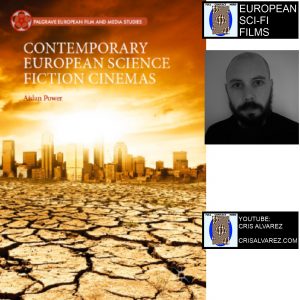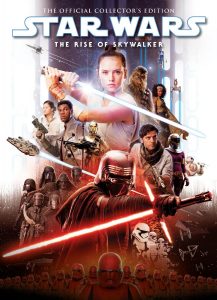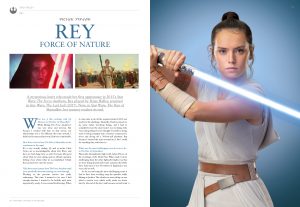European science fiction studies book – “Contemporary European Science Fiction Cinemas” (Palgrave MacMillan, 2018) – Aidan Power – FCN written interview 2
Contagion, outsiders, collapse. These are words used to describe financial crisis in Europe and the effects. However, these words can also be applied to science fiction stories and movies. Contemporary European science fiction filmmakers create films that reflect their society and they do so in fascinating and mind-bending ways.
Dr. Aidan Power became fascinated by these films and has taken the time to study and write on these contemporary science fiction films. Though often forced to make movies on tight budgets, these European producers, directors and writers have created new ways to observe and comment on Europe and the world. Dr. Power has written a study of the subject and he took the time to answer some of my questions about the book.
How did you become interested in studying and writing on the subject of your book?
The idea of a book on European science fiction (sf) had been on my mind for quite a while. I didn’t begin to think seriously about putting it together until 2013 when I sketched its outlines for a research project that I was putting together, but I can trace its genesis to a specific day: November 18th, 2010. That afternoon, officials from the Troika of European Central Bank, European Commission and the International Monetary Fund arrived in Dublin to essentially take over management of the Irish economy which, after a decade of unprecedented prosperity and monumental hubris, was on the verge of collapse. The Irish media had been rife with speculation for weeks that Ireland was on the brink and was going to need a bailout and everywhere the same mantra was being echoed, that of “contagion” in the Eurozone. As a broke PhD student with a side interest in sf-it all seemed weirdly science fictional, particularly when the news coverage presented the troika officials as if they had landed from outer space. The prevailing mood in Ireland was one of panic and helplessness: banks were collapsing and more and more people of my generation were immigrating. And panic was general all over Europe.
At times of great crisis, two things are usually guaranteed to happen: one, that capitalist powerbrokers impose drastic shock therapy on general populations to save the system and two, that sf films enjoy a resurgence. The former is to my mind demonstrated in the draconian austerity measures that the EU pursued in response to the Eurozone crisis, but with regard to the latter occurrence, sf was already enjoying a moment since the turn of the millennium. Since 9/11, old certainties began to fall by the wayside and it is notable for instance how many subsequent sf films in one way or another engaged with the tragedy and played upon related anxieties (Cloverfield, War of the Worlds, I am Legend, etc). In Europe, where sf film has a long tradition, there also seemed to be a marked increase in films and I was interested in exploring how they engage with European contexts, particularly in moments of crisis.
What aspect of this subject does your book focus on?
In a nutshell, my book focuses upon sf films and production from a cross-section of European countries, the idea being that if Europe was being assailed by crises then how were these issues being portrayed in European sf, a genre that is all about extrapolating and interrogating the contemporary moment, even if its narratives may be set in alternate futures or outer space, etc. For all its drawbacks, the European Union began life as what I would call a pragmatic utopia in response to the dystopian horrors of WWII. It is, in some respects then something of a science fiction project itself, but in recent years its supranational appeal has been brought into question, with a resurgence of nationalism in evidence across the continent (Brexit being but the most obvious manifestation, but by no means the most toxic).
I wanted to study as wide a variety of countries as possible and whilst for various reasons it wasn’t possible to cover all 28 EU member states (soon to be 27), I look at sf from founding EEC member states (Germany, France, Italy), Ireland and Britain (both of whom joined in 1973), Greece, Portugal and Spain (all of whom joined in the 1980s), Sweden, Finland and Austria (all 1995) and post 2004 EU member states (Hungary, Lithuania, Bulgaria, Croatia).
What are the major themes of this book?
To be succinct: science fiction, Europe, crises. The near collapse of the Eurozone was one such crisis and I devote two chapters to studying contemporary sf films from the five countries most affected, Portugal, Ireland, Italy, Greece and Spain. These films vary in quality from low-budget b-movies to critical arthouse successes such as Yorgos Lanthimos’ The Lobster (2015), but all can tell us much about the respective societies they portray. Another theme is the European migrant crisis and here the popular press was swift to deploy dehumanizing and decidedly science fictional language when describing Syrian and North African migrants (a lexicon that includes terms such as “invasions”, “swarms” etc). Again, I study this crisis through sf films, perhaps the most obvious example being a Hungarian film called Jupiter’s Moon/Jupiter holdja (Kornél Mundruczó 2017) which depicts the life of a Syrian refugee with superhuman powers who seeks entry into the EU. Elsewhere I look at the concerted European backlash against multiculturalism (case studies on British and French sf), as well as the climate crisis, which is the most science fictional crisis of all, in that it forces us to imagine the very end of the world as we know it, and as we ourselves made it.
Are you able to generalize about how many sf films take place on Earth versus outer space or an alien planet in European sf? I ask because this may differentiate between films that want to more directly engage audiences with “Earth” issues versus indirectly making points about European society?
While it’s difficult to provide specific up do date figures, given that the ground shifts almost daily, the great majority of European sf films that I have studied were earth based. This is at least partially due to budgetary restrictions. There are nevertheless exceptions, amongst them the Finnish sf spoof Iron Sky (Timo Vuorensola 2012), the Swedish Aniara (Pella Kågerman and Hugo Lilja 2018) or the Irish/British coproduction The Last Days on Mars (Ruairí Robinson 2013), all of which are set in space. A further, rather curious example is the short film Ambition (Tomek Baginski 2014) which stars Aiden Gillen and was part-funded by the European Space Agency.
There are a number of alien invasion films, all of which touch upon issues that stretch beyond the European sphere. The Italian film L’ultimo Terrestre/The Last Man on Earth (Gian Alfonso Pacinotti 2011) for instance draws on specifically Italian subject matter such as an aging population and the fallout from various scandals to befall the Berlusconi administration, but also makes some very universal points about our precarity as a species and how outside threats can lead to some unlikely alliances. Stéphanie Joalland’s little seen but worthwhile The Quiet Hour (2014) similarly imagines an alien invasion, albeit one where sightings of actual aliens are rare. Again, this absence is no doubt partially down to budgetary limitations but it is an absence that allows Joalland to foreground human survival and what we are willing to do to ensure it.
Are you able to generalize about how many sf films take place on Earth versus outer space or an alien planet in European sf? I ask because this may differentiate between films that want to more directly engage audiences with “Earth” issues versus indirectly making points about European society?
While it’s difficult to provide specific up do date figures, given that the ground shifts almost daily, the great majority of European sf films that I have studied were earth based. This is at least partially due to budgetary restrictions. There are nevertheless exceptions, amongst them the Finnish sf spoof Iron Sky (Timo Vuorensola 2012), the Swedish Aniara (Pella Kågerman and Hugo Lilja 2018) or the Irish/British coproduction The Last Days on Mars (Ruairí Robinson 2013), all of which are set in space. A further, rather curious example is the short film Ambition (Tomek Baginski 2014) which stars Aiden Gillen and was part-funded by the European Space Agency.
There are a number of alien invasion films, all of which touch upon issues that stretch beyond the European sphere. The Italian film L’ultimo Terrestre/The Last Man on Earth (Gian Alfonso Pacinotti 2011) for instance draws on specifically Italian subject matter such as an aging population and the fallout from various scandals to befall the Berlusconi administration, but also makes some very universal points about our precarity as a species and how outside threats can lead to some unlikely alliances. Stéphanie Joalland’s little seen but worthwhile The Quiet Hour (2014) similarly imagines an alien invasion, albeit one where sightings of actual aliens are rare. Again, this absence is no doubt partially down to budgetary limitations but it is an absence that allows Joalland to foreground human survival and what we are willing to do to ensure it.
In the same vein, how much European sf shows new technology or has elaborate special effects (even if cheaply done) versus European sf that sort of hints at or barely shows the “weird/advanced” tech or powers characters might have?
Of the films that I have looked at, the majority I would say, do not have elaborate special effects. Many instead are more conceptual, particularly “prestige sf from filmmakers like Michael Haneke and Yorgos Lanthimos. This is not to say that such films are the only kinds of European sf being made, however, and there is a rich history in Italy for example of creating wilfully cheap and cheerful exploitation sf. There are several examples of films that have both elaborate special effects and remain steadfastly arthouse. Lars von Trier’s Melancholia (2011), Aniara and the Lithuanian film Aurora/Vanishing Waves (Kristina Buozyte 2012) amongst them. For viewers looking for genuinely spectacular special effects, I would recommend Jupiter’s Moon.
You mentioned the use of language and vocabulary used in your study. Did you see any thematic differences in sf based on or affected by the language of the [country] film?
This is an interesting question and one that in truth, I would need to be a polyglot to answer definitively. What’s interesting in a European sphere is that co-productions between nations are very common, indeed European funding agencies actively encourage them. Subsequently, it is not unusual to see films from non-English speaking countries being shot in English for example. Such co-productions have a long history in Europe (think of Sergio Leone’s 1960s Westerns) and can be seen in sf films such as Melancholia or The Lobster. What is interesting is how regional and/or nationally specific sf often rehashes well-established conventions but nevertheless present something new by relating them to local concerns.
Was there much “military-sf” in what you studied and do certain countries seem to enjoy more military or action focused sf?
I wouldn’t say so exactly. There are, however, some films such as the low-budget Croatian film The Show Must Go On (2010) that allude to military conflict and metaphorically draw upon past conflict such as the Balkan Wars of the 1990s. In many instances the military is portrayed as a repressive force struggling to maintain order (28 Weeks Later (2007), Children of Men (2006), Jupiter’s Moon). Action sf instead is certainly in evidence and shows that notions of European sf as being primarily philosophical in nature is only partially true. Prominent examples of European action sf include Banlieue 13 (2004) and its sequel Banlieue 13: Ultimatum (2009), Autómata (Gabe Ibáñez 2014) and Attack the Block (Joe Cornish 2011). Outside of the EU, there has recently been an upsurge in action movie/sf mashups being made in Russia. I can’t vouch for their quality (I have only seen a few and was not too excited), but their budgets seem to significantly surpass those available elsewhere in Europe.
What resource materials did you use for your research?
I used a lot of archives, library materials, online databases and so forth. I also benefited from research that was undertaken at the University of York-based MeCETES Film Database.
What part of the research process was most enjoyable for you?
I was fortunate in that I was able to travel around quite a lot while researching the book and being able to learn from peers, some of whom have forgotten more about sf that I’ll ever know, was an invaluable experience.
What did you discover in your research that most surprised you?
The sheer volume of sf films that were made during the most economically turbulent period in Europe since the cessation of the second world war. To give but one example, Ireland which, with a few honourable exceptions had produced little to no indigenous sf films, suddenly produced close to a dozen in the seven years after Lehman Brothers collapsed in 2008.
Was there anything you discovered that moved you?
Yes. Seeing first-hand how the economic crisis decimated populations in rural Ireland and Italy for instance was dispiriting. Whole generations of people were forced to get by in increasingly precarious circumstances while many more left in search of a better life abroad. This was the legacy of how “contagion” in the Eurozone was dealt with in real terms. But even so, Europeans have had it easy compared to those fleeing civil war in Syria and seeking refuge within the EU. That so many continue to die en route to doing so is beyond appalling.
What was the most difficult issue to research?
A clear difficulty with analysing films, film industries and political events from a wide range of countries is that one can never realistically hope to be an expert on them all, one obvious reason being that aside from the fact that is impossible to beat local knowledge, there are 24 official languages in the EU. Another practical stumbling block is that it was not always easy to obtain copies of low budget films that may only have received limited national releases.
What do you hope the book will do for readers?
I’d hope that the book can be a useful resource for people interested in science fiction but unsure about its place in a European context. The aim was to expand the conversation about European sf and to think about it on a continental scale. Accordingly, it hopefully works as an introduction to contemporary European sf films as well as to the contexts, both social and economic that produced them. In addition to the chapters described earlier, there are also sections on the history of European sf, what, if anything, makes it different from Hollywood for example and how sf films get made (in addition to looking at several national film boards and production companies, I also analyse the relationship between one of the two major Europe-wide film funds and sf, as well as the relationship between Hollywood studios and European sf).
Did you have any difficulties in finishing the book and publishing it and if so, how did you overcome those?
It took me quite a while! I signed a contract with Palgrave in late 2015 but getting to a point where I was ready to submit the final proofs took longer than expected. I had co-edited books before, but that doesn’t prepare you for a first monograph, or at least it didn’t prepare me. Letting go of it was probably the hardest part because there are always things that you’d like to tweak and always areas that you think you could improve. I’m not sure I did overcome these issues exactly, but the world keeps turning.
What is your next research or writing project?
I have recently published a piece on relationship apps and late capitalism for a collection on Black Mirror called Through the Black Mirror: Deconstructing the Side Effects of the Digital Age. Additionally, I’ve been invited to present a paper on the links between European sf, the Anthropocene and migration at The University of North Carolina at Chapel Hill next spring.
Do you have any online accounts where people can find more of your work?
I am a co-founder of Alphaville Journal of Film and Screen Media, which is fully open access and thus free for everybody: http://www.alphavillejournal.com.
Author Biography
Dr. Aidan Power
Dr. Power is a lecturer in the Department of English and Film at the University of Exeter in England. He previously worked at the University of Bremen in Germany and University College Cork in my native Ireland where he was a Government of Ireland Scholar.
Position and specialty: Lecturer in Film Studies
Affiliation: University of Exeter
Project/work being discussed: Contemporary European Science Fiction Cinema
https://www.palgrave.com/gp/book/9783319898261
As an Amazon Associate I earn from qualifying purchases.








